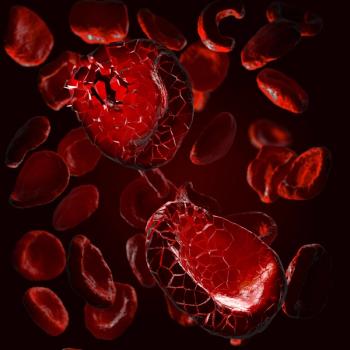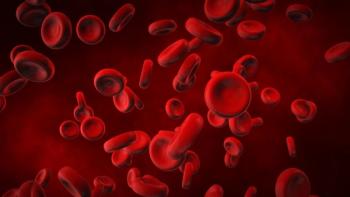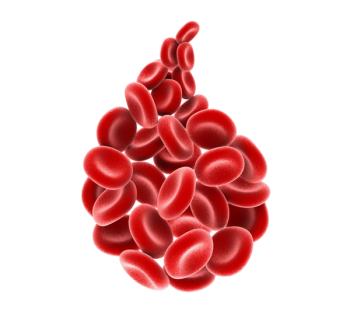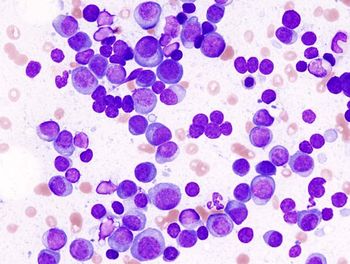
FDA Accepts Resubmission of BLA for RP1/Nivolumab in Advanced Melanoma
The agency has set a PDUFA date of April 10, 2026, for the decision on RP1 plus nivolumab in patients with previously treated advanced melanoma.
The FDA has accepted the resubmission of a biologics license application (BLA) for vusolimogene oderparepvec (RP1) in combination with nivolumab (Opdivo) as therapy for patients with advanced melanoma who had progression on an anti–PD-1 regimen, according to a press release from the developer, Replimune Group.1
A Prescription Drug User Fee Act date of April 10, 2026, has been established by the agency based on a Class 2 resubmission timeline.
Previously, the FDA
The developer reportedly included additional information, data, and analyses in the resubmission, which will all be part of the BLA review. This resubmission was considered to be a complete response to the CRL received in July 2025, per the FDA.
“We are pleased the agency has accepted the resubmission of our BLA for RP1,” stated Sushil Patel, PhD, CEO of Replimune, in the press release.1 “RP1 plus nivolumab offers a strong risk-benefit profile where there are few options for patients with advanced melanoma who have progressed on PD-1–based therapy. We look forward to working closely with the agency to expedite this review as much as possible for patients’ benefit.”
A total of 140 patients with advanced melanoma who previously had progression on anti–PD-1 therapy were enrolled in the trial. They were further assigned into tumor groups: patients with superficial tumors, which were tumors that could be visualized or palpated and accessed with standard-sized needles and syringes; patients with deep/visceral tumors, which were tumors that could not be directly observed or palpated and required imaging guidance to inject; and patients with visceral tumors, which were deep tumors associated with visceral organs.
Among the 140 patients with melanoma enrolled in the trial, the overall response rate (ORR) was 32.9%, with a complete response (CR) rate of 15.0%, a partial response (PR) rate of 17.9%, a stable disease (SD) rate of 22.1%, and a progressive disease (PD) rate of 38.6%. In patients with superficial tumors only (n = 104), the ORR was 29.8%, with CR and PR rates of 17.3% and 12.5% and SD and PD rates of 18.3% and 44.2%. In patients with deep/visceral plus superficial tumors (n = 14), the ORR was 42.9%, with CR and PR rates of 0% and 42.9% and SD and PD rates of 28.6% and 21.4%. In patients with deep/visceral tumors only (n = 22), the ORR was 40.9%, with CR and PR rates of 13.6% and 27.3% and SD and PD rates of 36.4% and 22.7%.
Treatment consisted of RP1 at 106 plaque-forming units (PFU)/mL for the first dose, then 107 PFU/mL for all subsequent doses. Nivolumab was given at 240 mg every 2 weeks for 8 cycles, then 480 mg every 4 weeks for 21 cycles.
Key eligibility criteria for IGNYTE included having advanced melanoma that progressed on anti–PD-1 therapy, measurable disease, adequate organ function, no prior oncolytic therapy, and an ECOG performance status of 0 or 1.
The primary end point of the trial was safety and efficacy by blinded independent committee review. Secondary end points were ORR per investigator assessment, duration of response, CR rate, and progression-free survival.
Regarding safety, any-grade treatment-related adverse events (AEs) occurred in 89.4% of patients with superficial tumors only, 85.7% of patients with deep/visceral plus superficial tumors, and 95.5% of patients with deep/visceral tumors only; grade 3 or 4 AEs occurred in 14.4%, 14.3%, and 4.5%, respectively.
References
- Replimune announces FDA acceptance of BLA resubmission of RP1 for the treatment of advanced melanoma. News release. Replimune. October 20, 2025. Accessed October 21, 2025. https://tinyurl.com/5yad7vza
- Replimune announces biologics license application acceptance and priority review for RP1 for the treatment of advanced melanoma. News release. Replimune. January 21, 2025. Accessed October 21, 2025. https://tinyurl.com/94jc39by
- Replimune receives complete response letter from FDA for RP1 biologics license application for the treatment of advanced melanoma. News release. Replimune. July 22, 2025. Accessed October 21, 2025. https://tinyurl.com/2335n7sk
- In GK, Wong MKK, Sacco JJ, et al. Response analysis for injected and non-injected lesions and of the safety and efficacy of superficial and deep/visceral RP1 injection in the registrational cohort of anti–PD-1–failed melanoma patients of the IGNYTE trial. J Clin Oncol. 2025;43(suppl 16):9537. doi:10.1200/JCO.2025.43.16_suppl.9537
Newsletter
Stay up to date on recent advances in the multidisciplinary approach to cancer.

















































































